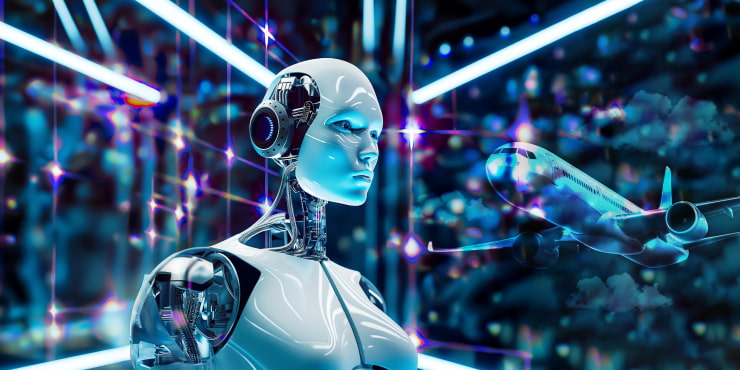In recent years, the field of aerospace simulations has witnessed a remarkable transformation, driven by the integration of Artificial Intelligence (AI). The use of AI in real-time aerospace simulations is not only revolutionizing the way we design and test aircraft but also enhancing the safety and efficiency of our skies. This article delves into the profound impact of AI on aerospace simulations, exploring its applications, benefits, challenges, and future prospects.

The Role of AI in Aerospace Simulations
The integration of AI in aerospace simulations has opened up new possibilities for engineers and researchers. By leveraging advanced algorithms and machine learning techniques, AI can simulate complex scenarios with unprecedented accuracy and speed. This capability is crucial in an industry where precision and safety are paramount.
Enhancing Design and Testing
One of the primary applications of AI in real-time aerospace simulations is in the design and testing phase. Traditionally, aircraft design involved extensive prototyping and wind tunnel testing, which were both time-consuming and expensive. However, with AI, engineers can create virtual models and run simulations to optimize designs before physical prototypes are built. This not only reduces costs but also accelerates the development process.
Moreover, AI simulations can predict potential issues, allowing engineers to address them proactively. This predictive capability enhances the overall safety and reliability of aerospace systems.
Real-Time Flight Simulations
Real-time flight simulations are critical for pilot training and mission planning. AI plays a pivotal role in creating realistic flight environments that mimic various weather conditions, emergencies, and other scenarios. Pilots can practice handling complex situations in a controlled environment, building their skills and confidence.
The use of AI also enables the simulation of autonomous flight systems, paving the way for future innovations such as unmanned aerial vehicles (UAVs) and air taxis.
Benefits of AI-Powered Aerospace Simulations
The adoption of AI in aerospace simulations offers numerous benefits to the industry, including:
Cost Efficiency
By reducing the need for physical prototypes and extensive testing, AI significantly lowers development costs. This cost efficiency is particularly advantageous for startups and smaller companies looking to enter the aerospace market.
Improved Safety
Safety is a top priority in aerospace, and AI plays a crucial role in enhancing it. By identifying potential risks and simulating emergency scenarios, AI helps engineers design safer aircraft and systems.
Accelerated Innovation
The speed and accuracy of AI-powered simulations enable rapid innovation. Engineers can test and iterate on new ideas quickly, leading to faster advancements in aerospace technology.
Challenges and Considerations
While the benefits of AI in aerospace simulations are undeniable, there are also challenges to address. These challenges include:
Data Quality and Availability
The effectiveness of AI simulations depends on the quality and availability of data. Ensuring that accurate and comprehensive data is available for training AI models is crucial for reliable outcomes.
Integration with Existing Systems
Integrating AI with existing aerospace systems can be complex. Ensuring compatibility and seamless operation requires careful planning and execution.
Ethical and Regulatory Concerns
The use of AI in aerospace raises ethical and regulatory questions. Ensuring compliance with industry standards and addressing potential biases in AI algorithms are important considerations.
The Future of AI in Aerospace Simulations
The future of AI in real-time aerospace simulations is promising. As technology continues to advance, we can expect even more sophisticated simulations that push the boundaries of what is possible. The integration of AI with emerging technologies such as quantum computing and 5G connectivity will further enhance the capabilities of aerospace simulations.
In this era of rapid technological advancement, the skies are the limit for AI-powered aerospace simulations. By embracing these innovations, the aerospace industry is poised to achieve new heights of safety, efficiency, and innovation.

FAQs
What is the role of AI in aerospace design?
AI in aerospace design is used to create virtual models, optimize designs, and predict potential issues, reducing costs and enhancing safety.
How does AI improve pilot training?
AI creates realistic flight simulations that mimic various scenarios, allowing pilots to practice handling complex situations in a controlled environment.
What are the challenges of integrating AI with aerospace systems?
Challenges include ensuring data quality, compatibility with existing systems, and addressing ethical and regulatory concerns.

